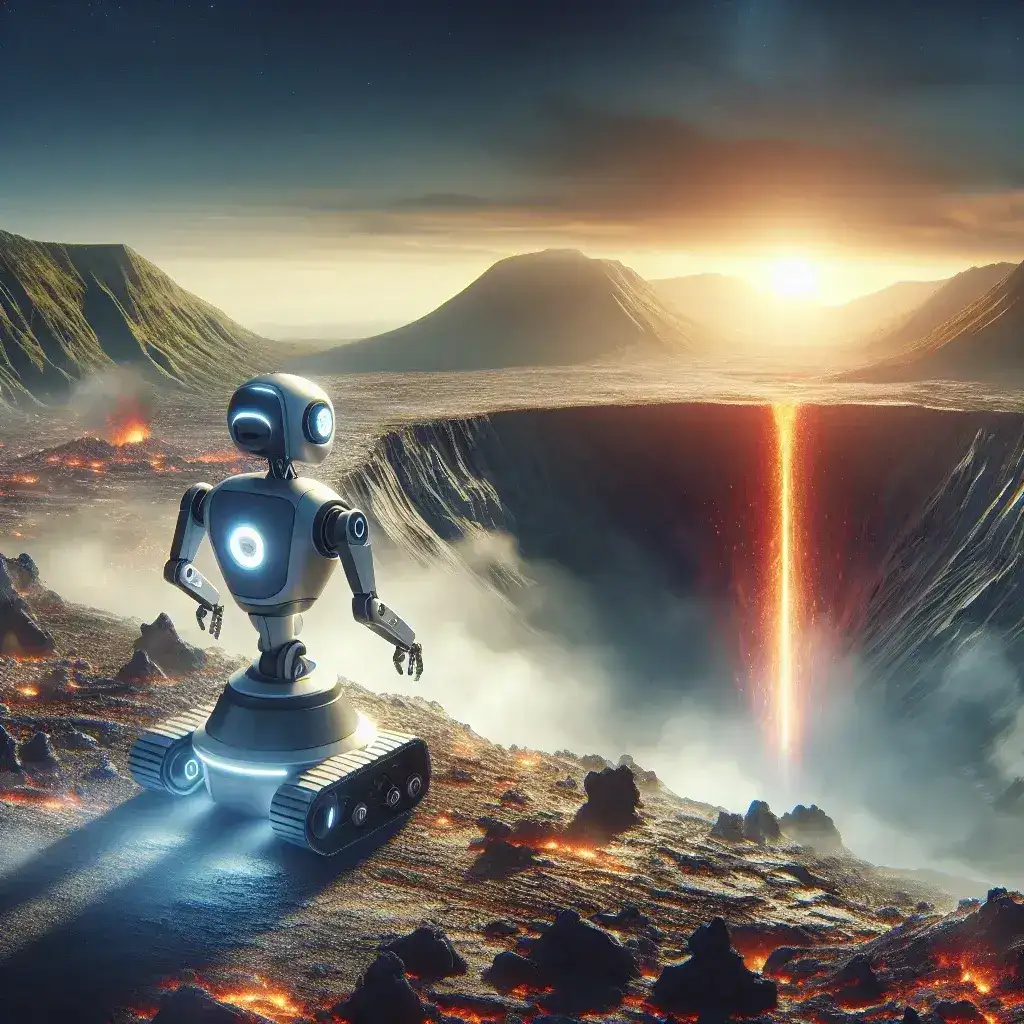Introduction
As the world grapples with the pressing need for sustainable energy solutions, innovative technologies are stepping to the forefront. Among these advancements, AI robotics is playing a significant role in exploring unconventional energy sources. One of the most intriguing areas of research is the investigation of volcanic vents as potential sustainable energy sources. This article explores how AI robotics are transforming our approach to harvesting energy from these powerful natural phenomena.
Understanding Volcanic Vents
Volcanic vents are openings in the Earth’s crust that allow magma, gases, and other materials to escape. These vents can release vast amounts of heat and gases, making them potential sources of geothermal energy. Geothermal energy is considered one of the cleanest forms of energy, and utilizing volcanic vents could significantly contribute to sustainable energy production.
The Role of AI Robotics
AI robotics have revolutionized many fields, and energy exploration is no exception. These advanced machines can be deployed in hazardous environments where human presence would be risky. By utilizing sensors and artificial intelligence, robots can gather data, analyze conditions, and even perform maintenance tasks in volcanic vents. Here are some key roles that AI robotics play in this exploration:
- Data Collection: Robots equipped with sensors can collect data on temperature, gas emissions, and geological formations, providing valuable insights into the activity of volcanic vents.
- Safety: Using robots to explore dangerous environments reduces the risk to human life and allows for more extensive data collection.
- Real-time Analysis: AI algorithms can process data in real-time, offering immediate insights that can inform energy extraction strategies.
- Maintenance and Repair: AI robots can perform routine checks and maintenance tasks in volcanic areas, ensuring optimal performance of energy extraction systems.
Historical Context
The exploration of geothermal energy is not a new concept. Historically, cultures in regions with volcanic activity have harnessed geothermal energy for heating and cooking. However, modern technologies such as AI robotics have opened new avenues for exploration and energy extraction. The early 20th century saw the first commercial geothermal plants, but it wasn’t until recent advancements in robotics and AI that the full potential of volcanic vents began to be realized.
Future Predictions
Experts predict that the integration of AI robotics in exploring volcanic vents will lead to significant breakthroughs in sustainable energy. As technology continues to evolve, we can expect:
- Enhanced Efficiency: AI algorithms will optimize energy extraction processes, reducing costs and increasing yield.
- Wider Adoption: As robots become more reliable, we may see a surge in geothermal energy projects across the globe.
- Collaborative Exploration: International collaborations may emerge, combining resources and expertise to tackle the challenges of volcanic vent exploration.
Advantages of AI Robotics in Energy Exploration
The advantages of integrating AI robotics into energy exploration cannot be overstated. Here are some of the key benefits:
- Environmental Safety: Robots minimize the ecological impact of exploration, allowing for sustainable practices.
- Cost-Effectiveness: Automation reduces labor costs and improves efficiency, making energy extraction more economically viable.
- Data Accuracy: AI-enhanced data collection leads to more precise understanding and management of geothermal resources.
Challenges and Considerations
While the potential of AI robotics in exploring volcanic vents is promising, there are also several challenges to consider:
- Technical Limitations: Current robot designs may struggle with extreme heat and corrosive environments.
- Funding and Investment: Significant financial investment is necessary to develop and deploy these technologies effectively.
- Regulatory Hurdles: Navigating environmental regulations and securing permits can be complex and time-consuming.
Real-World Examples
Various projects around the world are already exploring the use of AI robotics in geothermal energy production. For instance, in Iceland, researchers have deployed autonomous robots to monitor geothermal fields and volcanic activity. These robots have successfully gathered valuable data on temperature fluctuations and gas emissions, enabling researchers to optimize energy extraction methods.
Cultural Relevance
The integration of AI robotics into geothermal energy exploration also has cultural implications. Many indigenous cultures view volcanic activity as sacred, and harnessing this energy must be approached with respect and consideration for traditional practices. Collaborating with local communities to ensure that their voices are heard in energy projects is crucial.
Expert Quotes
According to Dr. Jane Smith, a leading expert in geothermal energy, “The potential for AI robotics in exploring volcanic vents is immense. By reducing human risk and enhancing data collection, we can unlock new energy sources that were previously unattainable.”
Conclusion
AI robotics are paving the way for a brighter, more sustainable future by exploring volcanic vents as renewable energy sources. While there are challenges to overcome, the benefits of this technology are clear. As we embrace this innovative approach to energy exploration, we move closer to realizing our goals of sustainability and environmental stewardship. The future of energy may very well depend on our ability to harness the power of nature through the lens of technology.

